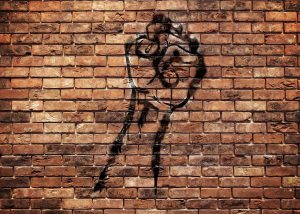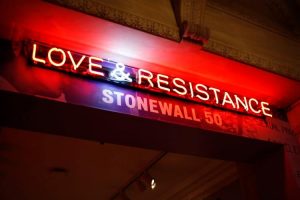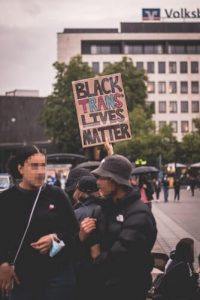 Kindness requires more than acts. It requires educating yourself on what is ignored during times of change and working to make sure it is no longer overlooked. In the documentary “Pay It No Mind,” Marsha P. Johnson says about Stonewall: “History isn’t something you look back at and say it was inevitable, it happens because people make decisions that are sometimes very impulsive and of the moment, but those moments are cumulative realities.” Now, as during the Stonewall Riots, BIPOC transgender and gender nonconforming people are more at risk for police brutality, yet are often overlooked by the mainstream conversation. Now is our time to make the decision to make a change.
Kindness requires more than acts. It requires educating yourself on what is ignored during times of change and working to make sure it is no longer overlooked. In the documentary “Pay It No Mind,” Marsha P. Johnson says about Stonewall: “History isn’t something you look back at and say it was inevitable, it happens because people make decisions that are sometimes very impulsive and of the moment, but those moments are cumulative realities.” Now, as during the Stonewall Riots, BIPOC transgender and gender nonconforming people are more at risk for police brutality, yet are often overlooked by the mainstream conversation. Now is our time to make the decision to make a change.
A Brief History of Stonewall:
While the fight for LGBTQ+ equality has a long and dramatic history, the 1969 Stonewall Riots mark the moment when things in the United States started to change. In the 1960’s, homosexuality was illegal in the United States. Law enforcement targeted known gay bars for homosexual and gender non-conforming behavior. Drag performers and transgender people were often the victims of physical and sexual assault at the hands of arresting officers.
On the night of Friday, June 27, 1969, police raided the Stonewall Inn, just as they had so many other nights. However, rather than accept it, the bar attendees fought back. An arresting officer hit Stormé DeLarverie, a biracial drag king, and she hit back. Soon, the entire crowd fought back, and while there is debate over who threw the first brick, what sources do agree on is that two of the most influential leaders of the Stonewall Uprising were Marsha P. Johnson, a Black trans woman, and Sylvia Rivera, a Venezuelan and Puerto Rican trans woman. After Stonewall, LGBTQ+ people began to come out in droves, and the first Pride march took place a year later.
How Does Stonewall Connect to 2020’s Black Lives Matter Protests?
On the surface, Pride and Black Lives Matter protests do not feel connected. However, they are integrally connected. While most of us know the stories of Breonna Taylor, George Floyd, Eric Garner, Sandra Bland, Michael Brown, and Tamir Rice, among so many other Black victims of police brutality, there are other stories that are left out. In 2015, Mya Hall was shot by police after taking a wrong turn off of the interstate. In 2016, Kayden Clarke was shot by police during a wellness check. In 2019, Layleen Xtravaganza Cubilette-Polanco died of a seizure alone in an isolation cell while prison guards laughed outside of it. In December 2019, Mia Perry was shot by security guards. And in May of 2020, Tony McDade was shot by police outside of an apartment complex in Tallahassee. While these victims are separated by time and distance, they share some commonalities: all are Black and transgender. And few protesters chant their names.
According to the National Center for Transgender Equality, more than 22% of transgender people who have interacted with police reported police harassment. In addition, they also report higher rates of “biased harassment and assault” (38% and 15%, respectively). Despite being more likely to suffer from police brutality, Black trans voices are silenced during times of protest.
However, the silencing of transgender voices is nothing new. In 1973, Sylvia Rivera jumped on stage during New York’s Pride celebration after she had been denied the right to speak. Pride would not be possible without Trans Women of Color like Rivera and Marsha P. Johnson, yet Rivera felt she was silenced by predominantly white Pride organizers who wished the celebration to focus on more socially-conforming white gay and lesbian identities. And in 2020, as the country marches for Black lives, the names of Black trans lives ended by police are seldom heard.
 So What Can We Do About It?
So What Can We Do About It?
First of all, say their names. If you attend a protest, carry signs with their pictures and names. Share their stories. Keep their memories alive.
Next, look into organizations dedicated to activism for Black transgender communities. Learn about the intersectional plight of the Black trans community, and research how to help. The Black Queer and Intersectional Collective “is a grassroots community organization that works towards the liberation of Black queer, trans, and intersex people from all walks of life through direct action, community organizing, education on our issues, and creating spaces to uplift our voices.” And, the Trans Women of Color Collective shares a mission of a collective “led by the narratives, leadership and voices of our community members who exist at the nexus of state sanctioned violence; sex workers, poor people, homelessness and folk experiencing housing insecurity, folks deeply entrenched in complex, seemingly inescapable traumatic environments. Through healing and restorative justice, [we] are building a network of trans, non-binary Black and people of color who are artists, healers, entrepreneurs and creators sharing and cultivating sustainable projects for us and by us.”
Remember, “kindness has a spine.” If you know of organizations that are working for social change and that need amplification, please tweet us @RandomActsOrg.
